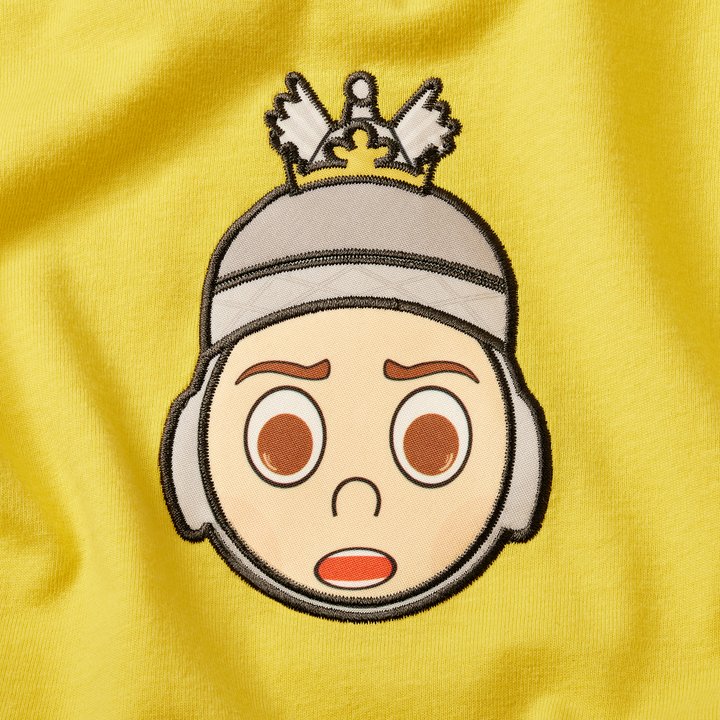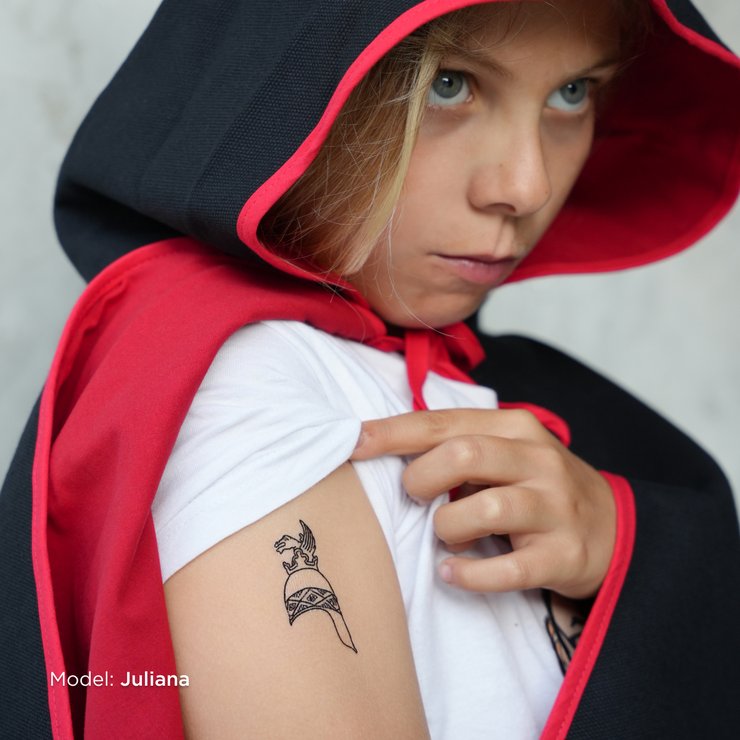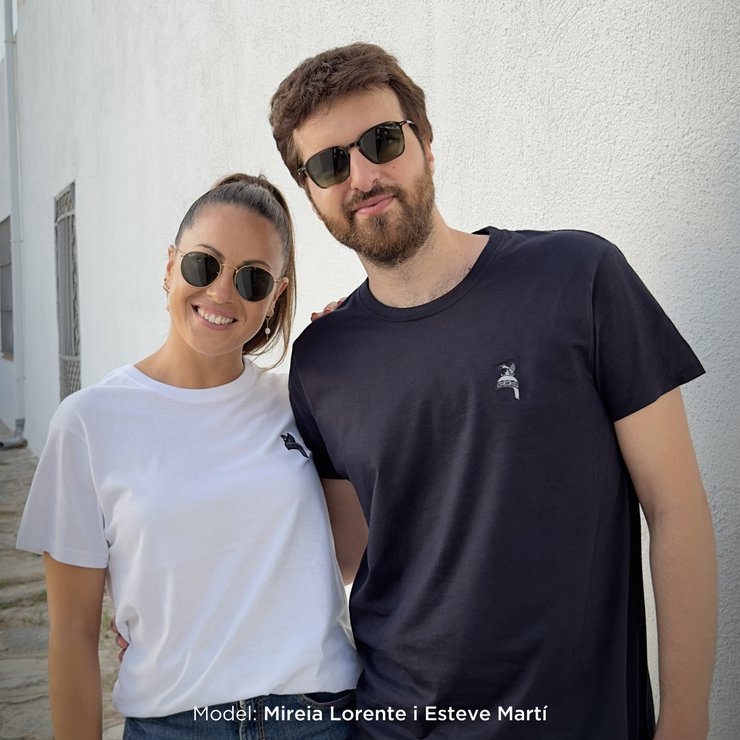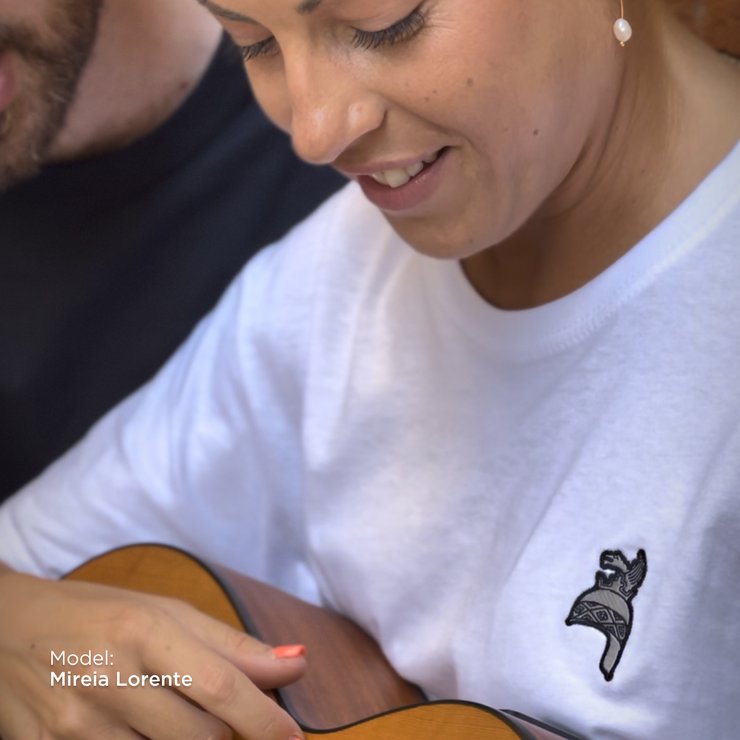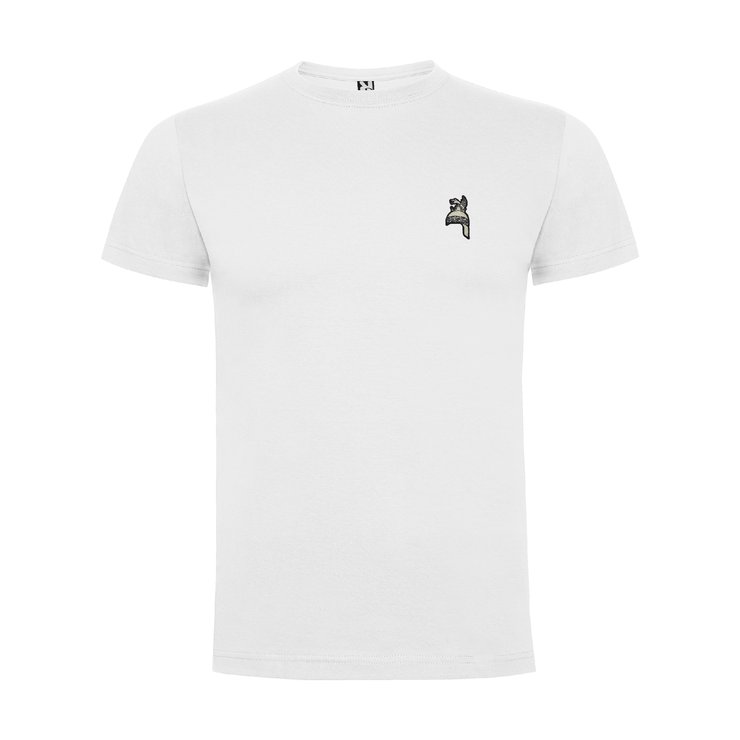ROBAFAVES
Robafaves de Mataró is a giant with a robust face, tall and big, with a medieval warrior's garment (helmet, cloak, coat of mail, sword...), which is inspired by the figure and character of King Jaume I the Conqueror. On his chest he wears three or four medals, depending on the occasion, and on his left hand, he wears a scroll (in which the legend of his name is explained), while on his right hand he takes his cloak.
The construction of the current Robafaves was commissioned to Josep Maria Diamant y Montañés in 1964, who created new polyester volumes to reduce weight and improve strength.
In 1984, Mataró City Council approved a new regulation, and the Giants are included as part of the city's public heritage and its institutional representation, which is why an important process of innovations in the figure aspect is being carried out. Robafaves passes through the Solsonencs workshop of Manel Casserres, who maintains the metallic structures but makes a complete remodelling of the appearance using the cardboard again for the head and hands, without leaving the fibreglass. A new wardrobe is also made, recalling the style of the 1950s by Llorenç Illa, despite the fact that in 1992 Manuel Casserres himself renovated the wardrobe again.
In 2014 the Town Hall of Mataró renovates the Robafaves wardrobe with Manuel Casserres, who opts for a line of continuous wardrobe, without major changes.
Robafaves dances to the sound of "flabiolaires" in the parades and the sleeping ones. In "la Dormida", Robafaves dances with Geganta "La Masurca", the repertoire of "flabiolaire" Quirze Perich. Then, she dances with Geganta, Toneta and Maneló "El Baile de Cuatro" by Carles Arabia. All the dances are a choreography of Montserrat Calsapeu.
Acts in which it participates: Robafaves participates in the majority of acts of "Les Santes" of Mataró, Festa Major de Mataró; la Crida, el Desvetllament Bellugós, l’Anada a Ofici, la Passada, Anada a la Residència Sant Josep, el No n’hi ha prou, l’Anem a tancar i and also goes out for the Day of Sant Jordi.
The legend of Robafaves de Mataró
Once upon a time, the town of Argentona invited the giants from Mataró to come and dance there.
When the party ended, and on the way back to Mataró, the giant bearers saw, by the side of the road, some very large and beautiful broad beans. Immediately, they all started to imagine the dishes they could cook with those wonderful beans.
They were so tempting that the bearers placed the giants in the middle of the road and, after making sure no one was watching them, began to pick as many beans as they could.
The bearers didn't have enough space in their pockets, and they didn't know where to store them.
That was when one of them had a brilliant idea:
—Why don't we hide them under the giant's cloak?
Said and done, once hidden, they all continued happily on their way back to the city of Mataró.
When they were about to reach the City Hall, the children began to surround them and, with much insistence, kept repeating:
—We want you to dance! We want you to dance!
The giant bearers resisted, giving excuses:
—It can't be! We are very tired from the outing.
They had the misfortune that an authority figure saw them and said:
—It won't hurt you to make the children happy. Come on, give them a dance!
The bearers looked at each other and had no choice but to start making the giant dance.
And do you know what happened?
The giant began to spin and spin, and with so much movement, the beans fell to the ground!
The people surrounding him, surprised, began to shout:
"He stole beans! He stole beans!"
Since that day, the poor giant has been known as... Robafaves.

